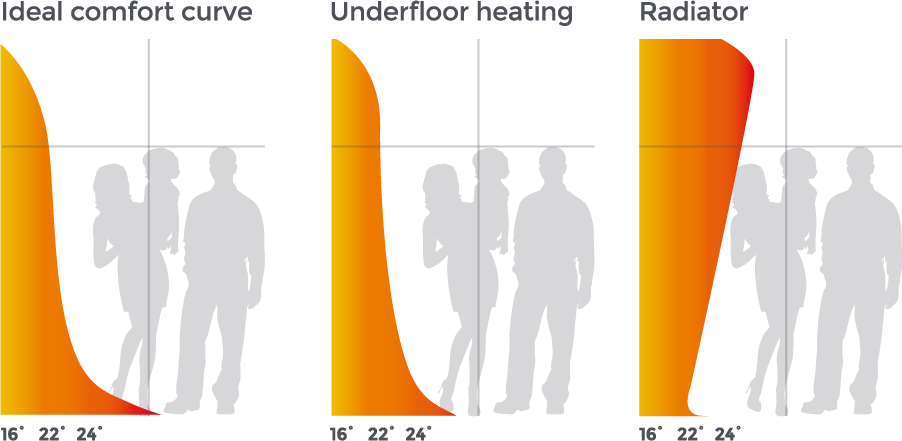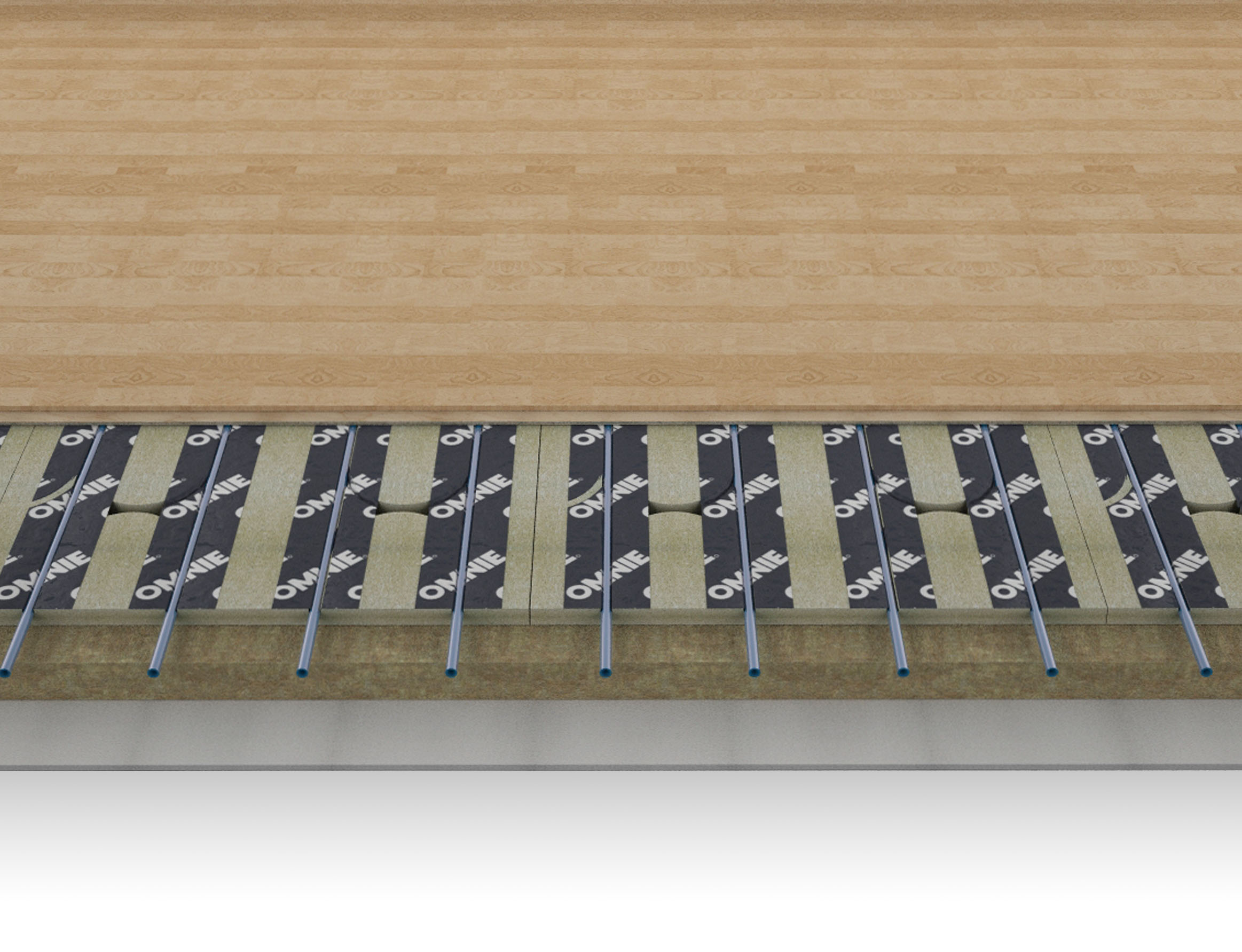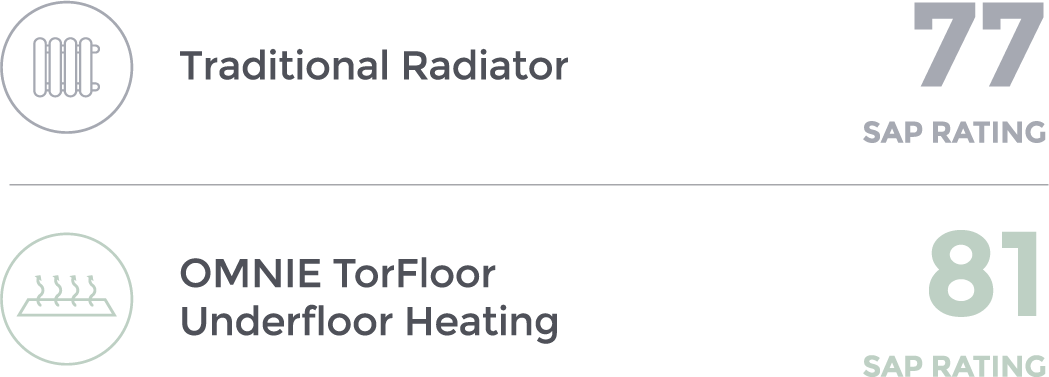Not only does underfloor heating create a better use of space, it’s also more efficient than other heat sources
You might think that underfloor heating is quite a complex subject, but really the concept is simple. Warm water distributed through a manifold is circulated through pipes underneath the floor.
Why Underfloor Heating?
Design
With decades of experience, the OMNIE team has developed a range of products that take the guesswork and mystery out of underfloor heating. OMNIE products are easy to configure with known, independently-tested heat outputs.
Warmth & Comfort
Underfloor heating warms a room using radiant heat and this is more comfortable than heating a room by air alone, as you do with radiators. We get a similar feeling of comfort from the sun.
Wellbeing
Underfloor heating provides a balanced level of radiant heat and air warming. If the heating is provided by high air temperatures this can dry the skin and eyes. Warming the floor also reduces the occurrence of dust mites that cause allergies.
Renewables
In general, renewable heat is easier to produce efficiently at low water temperatures. Good underfloor heating uses low temperature water and this is why these systems are best suited to renewable energy.
Efficiency
OMNIE products are designed specifically to work at low water temperatures, improving the efficiency of the heat pump, reducing running costs and saving you money.
Create a comfortable home with underfloor heating
Underfloor heating works by circulating warm water through pipe embedded within the floor construction. Heat from the pipe is transferred into the floor and then into the room, providing enough warmth to heat the building all year round.
This removes the need for radiators by making more effective use of the space, as well as eliminating any high temperature surfaces. An underfloor heating system generally has a surface temperature between 25˚C and 27˚C, lower than the palm of your hand. A conventional radiator can be as hot as 75˚C.
The way in which underfloor heating transfers heat is also different to a radiator. Radiators transfer energy principally by convection, heating the air above and around the radiator causing the air to rise. As the warmed air is more buoyant than the cooler air in the room it will rise to the ceiling. The warmed air, as it crosses the ceiling, will begin to cool and then fall creating a draught.

Make savings on heat output and improve performance with OMNIE systems
What Makes OMNIE Different?
Different underfloor heating products vary in performance, so it important to choose the right system for your home.
OMNIE underfloor heating products are specifically designed to ensure the best possible performance in terms of efficiency, heat output and warm-up time.
As a result of good product design, OMNIE’s Torfloor outperforms generic underfloor heating diffuser plates ensuring lower running costs, faster warm-up and better heat output.

OMNIE underfloor heating can improve SAP ratings
What is A SAP Rating?
A SAP rating is a calculation to predict the energy performance for new dwellings. The SAP rating takes into account insulation levels and the types of renewable energy products used in the building. The higher the rating the better the building’s predicted energy performance.
OMNIE UFH and SAP
OMNIE Underfloor heating products for timber constructions, or ‘dry constructions’, have a faster warm-up and cool down time than underfloor heating in screed floors. This reduces the possibility of overheating and improves efficiency. Also, when compared to radiators, underfloor heating is more efficient when used with a heat pump.
These factors combine so that using OMNIE timber underfloor heating, such as TorFloor, over conventional radiators improves the energy efficiency of the building and increases the SAP rating.


